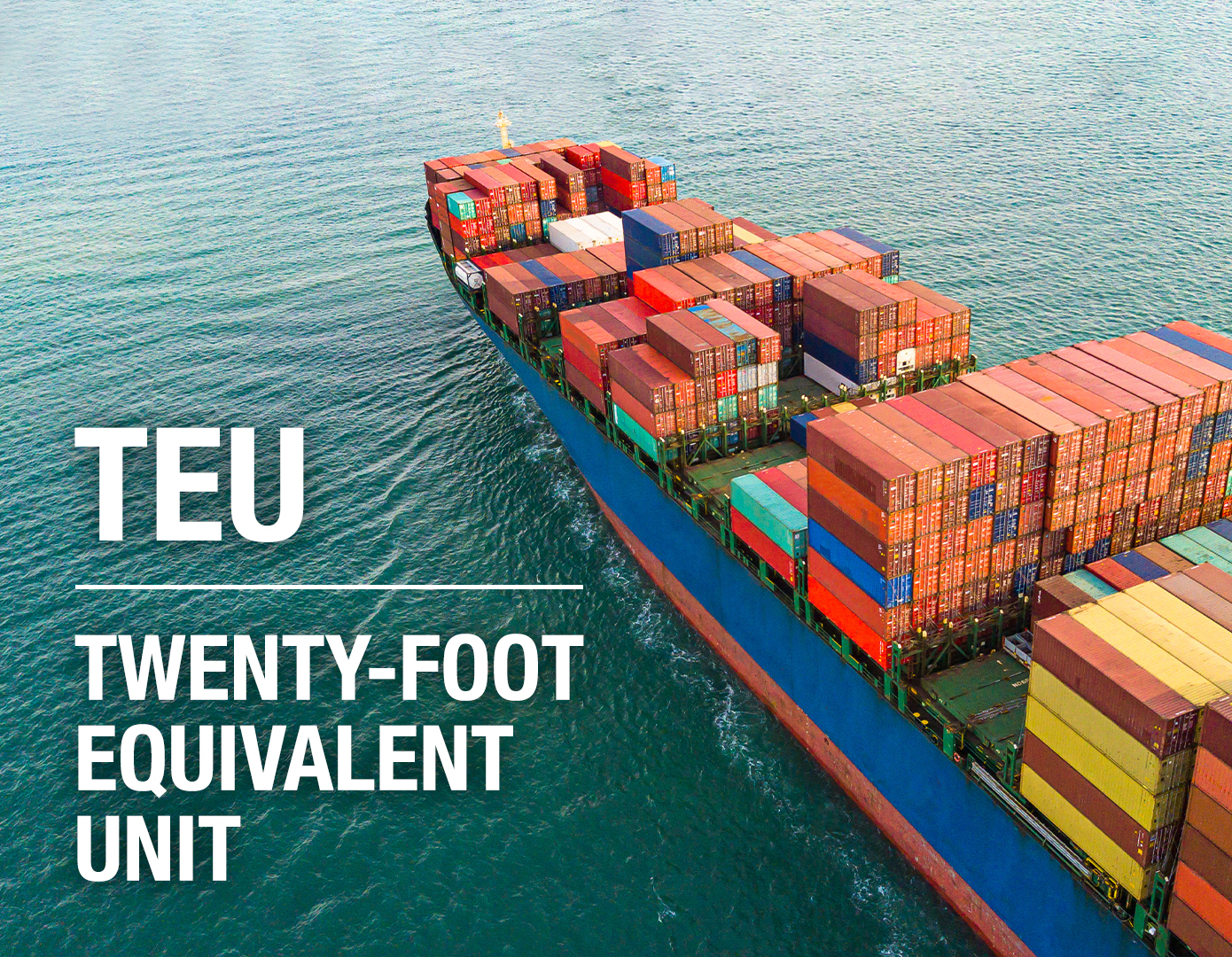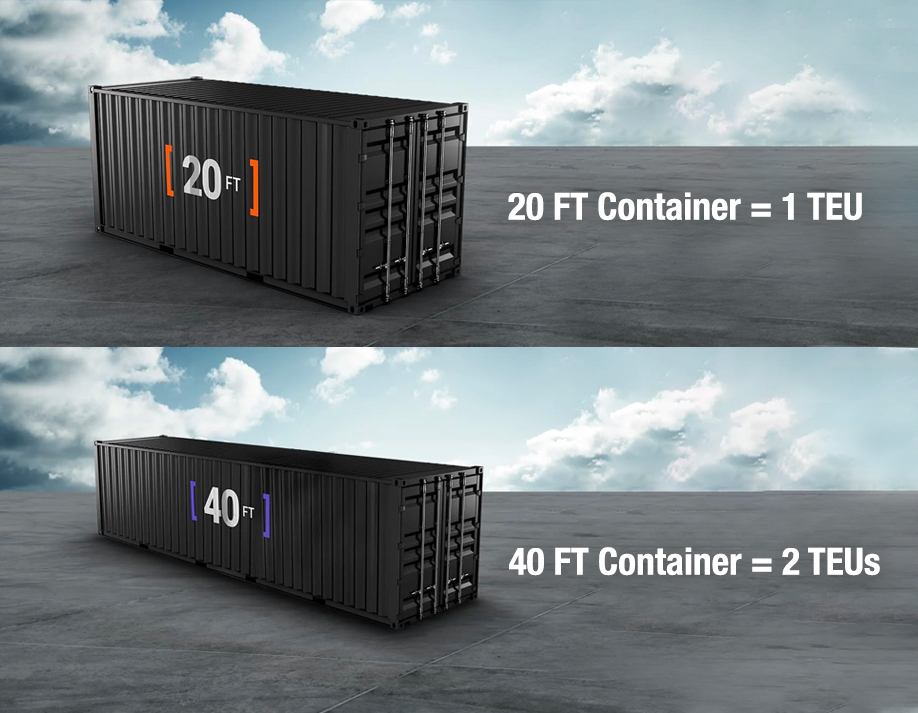What is TEU: Twenty-Foot Equivalent Unit
Learn what the Twenty-Foot Equivalent Unit (TEU) is and why it is used in container shipping.
Table of Contents
Have you ever heard of the term TEU and wondered what it means in the shipping industry? Do you know how container ships and ports are measured? Are you curious to learn about the importance of TEU and how it affects international logistics?
What is TEU?
TEU (Twenty-foot Equivalent Unit) is the standard unit of measurement used to describe the cargo capacity of container ships and container ports. It is based on the measurement of a standard 20-foot container.
Container ships are often measured in terms of their overall TEU capacity. For instance, a ship with a capacity of 6000TEU indicates that it can transport approximately 6000 standard 20 feet containers.

Read on to learn all you need to know about TEU; what TEU is used for, how to calculate TEU, the importance of TEU, the History of TEU, and many more.
What is TEU used for?
TEU is a vital tool used in the shipping industry to measure port metrics, efficiency, and capacity of container ships and terminals.
It also helps determine the maximum cubic feet of cargo that can be shipped on any given vessel. To calculate the overall shipping capacity in TEU, the number of cargo containers loaded onto the ship is multiplied by the total TEU measurement of each container.
TEU is an effective tool for businesses involved in international trade, and helps make navigating complex global supply chains simpler and more efficient.
What is TEU Container Dimension?
TEU is defined by its external and internal dimensions, which determine the amount and size of cargo it can carry.
| Dim | External Measurement | Internal Measurement |
|---|---|---|
| Length | 20 feet (6.1 meters) | 19 feet 4 inches (5.89 meters) |
| Width | 8 feet (2.44 meters) | 7 feet 8 inches (2.34 meters) |
| Height | 8 feet 6 inches (2.59 meters) | 7 feet 10 inches (2.39 meters) |
The external dimensions are used to calculate the cargo capacity and transportation efficiency of container ships and ports, while the internal dimensions determine the actual space available for cargo.
Understanding the dimensions of a TEU container is crucial for businesses involved in international trade, as it helps them plan and optimize their cargo shipments effectively.
How to Calculate TEU
Calculating TEU involves dividing the length of the container in feet by 20. The formula for TEU calculation is: TEU = Length (feet) / 20
| Container Length | Calculation | TEU |
|---|---|---|
| 20 feet | 20 feet / 20 = | 1 TEU |
| 40 feet | 40 feet / 20 = | 2 TEUs |
| 45 feet | 45 feet / 20 = | 2.25 TEUs |
| 48 feet | 48 feet / 20 = | 2.4 TEUs |

By using TEUs, shipping companies and terminals can standardize the measurement of cargo volume and determine the number of containers they can carry or store. This information is crucial for efficient loading and unloading of cargo and maximizing the use of available space.
Is TEU Important?
TEU plays a significant and crucial role in the global trade world. It is not only a unit of measurement for shipping TEU but also measures vessel size, capacity, and port activities.
The table below shows examples of vessel sizes classified according to their TEU capacity.
| Vessel Category | TEU Capacity |
|---|---|
| Small Feeder | Up to 1000 |
| Feeder | 1000 - 2000 |
| Feeder Max | 2000 - 3000 |
| Panamax Vessel | 3000 - 5000 |
| Post Panamax Vessel | 5000 - 10000 |
| New Panamax/Neo Panamax Vessel | 10000 - 14500 |
| Ultra Large Container Vessel (ULCV) | Above 14500 |
Conclusion
In conclusion, TEU is a crucial unit of measurement used in the shipping industry to determine the cargo capacity of container ships and ports. TEU has its roots in the standardization of shipping containers and has revolutionized the industry, making it more efficient and cost-effective for transporting goods internationally.
Calculating TEU is important for understanding the capacity of vessels and optimizing cargo shipments. Knowing the dimensions of a TEU container is also essential for planning and optimizing cargo shipments.
Overall, understanding TEU is vital for businesses involved in international trade, helping them estimate shipping costs accurately and navigate complex global supply chains more efficiently.
History of TEU: How it Started
The history of TEU can be traced back to the standardization of shipping containers in the 1960s. Before the use of shipping containers, cargo was loaded onto vessels using boxes, sacks, crates, barrels, and other forms.
In the 1950s, Mclean Malcom, an American transport entrepreneur, invented the standardized corrugated steel container to replace the traditional cargo loading and unloading process. He purchased an oil vessel ship called Ideal X and redesigned it to carry 58 containers, which marked the beginning of containerized cargo.
As more competitors entered the market, problems arose due to the lack of standardization. The US government requested a more efficient way of shipping transportation, which led to the standardization of container dimensions. After two rounds of standardization by the ISO in 1968, the 20-foot and 40-foot containers were invented. The 20-foot container was later named the Twenty-foot Equivalent Unit (TEU), which is the standard unit used in measuring cargo capacity today.
The invention of TEU revolutionized the shipping industry, making it more efficient and cost-effective for clients to transport their goods internationally.